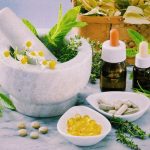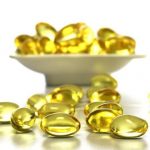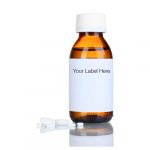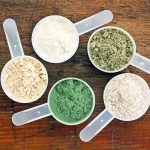What Are Nutraceuticals and Its Classifications

What Are Nutraceuticals and Its Classifications –Food and Food Supplements are termed and mentioned differently by global Health Authorities. a number of the terminologies used are ‘health supplements’, ‘dietary supplements, ‘food supplements’, ‘nutraceuticals’, ‘health functional foods, ‘health functional beverages’, ‘foods for special dietary use’, ‘Functional Foods’, and so on. foodstuff classification can vary from country to country. One must determine the category or category supported by the regulations and requirements of the respective.
The term nutraceutical was coined by Stephen Defelice “A NEUTRACEUTICAL is any substance that’s a food or a neighborhood of food and provides medical or health benefits, including the prevention and treatment of disease”. Such foods are commonly mentioned as functional foods, signifying that these foods and/or their components may provide a health benefit that goes beyond basic nutrition. The Nutrition Business Journal states that it uses the term, nutraceutical, for love or money that’s consumed primarily or particularly for health reasons. supported that definition, a functional food would be a sort of nutraceutical.
Table of Contents
Classification:
Nutraceuticals are often organized in several ways, depending upon their application and easier understanding. Some classifications are often supported by academic instruction, clinical test design, functional food development, or dietary recommendations.
Nutraceuticals are often classified based on:
- Natural source
- Pharmacological conditions
- Chemical constitution
Inorganic Mineral Supplement:
- Calcium,
- Manganese
- Boron
- Copper
- Zinc
- Phosphorus
This type of product is meant to enhance physical health, and fight against day-to-day challenges like stress, increase longevity, etc. It’s a food supplement that plays an important role in maintaining a healthy body and provides the required supplements required for various metabolic processes to manage body functions and thus protects the body from disease. Nutraceuticals do quite just supplement the diet. they assist with disease prevention and treatment.
PROBIOTICS:
Live microorganisms which, when applied in sufficient quantities, present a fitness benefit on the proprietor:
- Species of Lactobacillus
- Bifidobacterium
- Yeast Saccharomyces cerevisiae
- Some E. coli and Bacillus species are also used as probiotic
PREBIOTICS:
Nondigestible substances that provide beneficial physiological effect for the host by selectively stimulating the favorable growth of a limited number of indigenous bacteria.
Commonly known prebiotics are:
- Oligofructose
- Inulin
- Galacto-oligosaccharides
- Lactulose
DIETARY FIBRES:
Dietary fibers are of two types:
- Water-insoluble fibers
- Water-soluble fibers
The Daily recommended intake is 30-40gms.
SOURCES:
- Whole grain cereals, Wheat products.
- Oats, Dried beans, Legumes
ANTIOXIDANTS:
Antioxidants are of 3Categories:
1. True antioxidants
2. Reducing agents
3. Antioxidantsynergists
Deficiency causes diseases like cancers, rheumatoid, arthritis, Alzheimer’s disease, cardiovascular diseases.
The nutraceutical industry has emerged as a crucial part of the food industry. With the high economic process, increasing income, and changing lifestyles, the market is growing enormously. Globally, the nutraceutical business was situated at 65 billion dollars in 2002 and was supposed to improve to 250 billion dollars by 2005. In India, this market is at about Rs. 1, 600 crores at the present, with an annual rate of growth of 25%.
In developed countries, predictable factors are largely liable for encouraging the expansion of the nutraceutical industry. High disposable incomes, changing lifestyles with unhealthy eating habits, increasing incidence of health problems, an increasingly larger aging population with unique dietary must maintain health, etc., have all prompted the event of the latest nutritional solutions, especially the utilization of nutraceuticals.
Therefore, there’s a big correlation between the expansion of nutritional ingredients and demographic issues and confidence within the growth of nutraceutical products over the subsequent 20 years.
HERBS AS FUNCTIONAL FOODS:
FLAX SEEDS:
SOURCE : Linum usitatissimum.
FAMILY: Linaceae.
CHEMICAL CONSTITUENTS :
- Gamma-linolenic acid
- Alpha-linolenic acid
- Secoisolariciresinol(SDG)
- Lignans, Proteins.
USES :
- Prevents mammary, colon, and rectal cancers.
- Reduces BP in hypertensive patients.
- Reduces diabetes and coronary heart diseases.
BILOBA:
FAMILY: Ginkgoaceae
CHEMICAL CONSTITUENTS : Bilobelin, Ginkgetin, Isoginkgetin, Flavanols, Ginkgolides,B,C.
USES :
- In treating asthma,
- Impairment of memory.
- Leaves can alleviate the adverse effects of PAF
SPIRULINA:
SOURCE: Spindina platensis or s.maxima
FAMILY: Oscillatoriaceae
CHEMICAL CONSTITUENTS:
- Gamma linoleic acid, Oleic acid Glycolipids, and sulpholipids.
- Rich in vitamin Band beta carotenes.
- Phycocyanin
USES :
- Immunostimulantactivity.
- Management of HIV and other viral infections such as Herpes, Cytomegalovirus, Influenza, Mumps
- To treat arthritis, Atherosclerosis, Diabetes and Aging Process
KARELA:
SOURCE: Momordica charantia
FAMILY: Cucurbitaceae
USES :
- Hypoglycemic effect
- Extract of karela improves rate of glycogen assembly by 4-5 crimp in liver
TURMERIC CURCUMINOIDS:
SOURCE : Rhizomes of Curcuma longa
FAMILY: Zingiberaceae
CHEMICAL CONSTITUENTS: Curcumin, Desmethoxy Curcumin, Bisdesmethoxy Curcumin
USES :
- Antimicrobial activity
- Original conclusions register that it has integrase protein inhibitor movement
SOYA PRODUCTS:
SOURCE: Glycine
max
FAMILY: Leguminosae
CHEMICAL CONSTITUENTS: Daidzein, genistein
USES :
- Prevents estrogen–dependant cancers
- Geinstein inhibits protein tyrosine kinase and DNA topoisomerase-I
GARLIC:
SOURCE: Bulbs of Allium sativum
FAMILY: Liliaceae
CHEMICAL CONSTITUENTS: Allicin, Allicin, Ajoene
USES :
- In the treatment of hyperlipidemia.
- It shows antihypertensive, hypoglycemic, anti-spasmodic activity.
- Prevents colon and lung cancers.
TOMATO LYCOPENE:
SOURCE: Lycopersicon Esculentum
FAMILY: Solanaceae
CHEMICAL CONSTITUENTS: Lycopene
USES :
- Prevents prostate cancer
- Reduces risk of cancers of digestive tract,
- Pancreas, Cervix, Bladder, and Skin.
FENUGREEK:
SOURCE : Trigonella foenum-graecum
FAMILY: Leguminosae
CHEMICAL CONSTITUENTS: Alkaloids (gentianine and trigonelline) flavonoids, Coumarins, Proteins, Amino Acids, Steroid Saponins.
USES :
- In the treatment of Anorexia, Gastritis.
- Fenugreek possesses laxative, Expectorant, Demulcent properties.
- Shows Hypoglycemic and Hypocholesterolemic Properties
GINSENG:
SOURCE: Panax ginseng
FAMILY: Araliaceae
CHEMICAL CONSTITUENTS: Protopanaxadiol, Polysaccharides, Starch, sterols, Polyacetylenes, choline, Vitamins B1, B2, B12, Pantothenic acid, biotin.
USES :
- Ginseng stimulates the body to cope with anxiety and exhaustion
- In treatment of hypertension and hypoglycemia
- Modifies liver function and metabolism.
In India, there’s a scarcity of clarity in classifying items into functional foods and nutraceuticals. This involves the controls. At times, the drug controls are moved to incorporate these outcomes as drugs. This has resulted in trouble for genuine manufacturers. Proper legislation is that the need of the hour.
The Government of India has taken certain welcome steps just like the amendment of the PFA (Prevention of Food Adulteration Act) which defines “Food for special dietary uses”. Another revolutionary step that’s being planned is to introduce a Food Safety and Standards Act. This may replace the old PFA with new legislation. The new Act will take India on the trail of a replacement regulatory framework to form it capable of taking over global competition.





